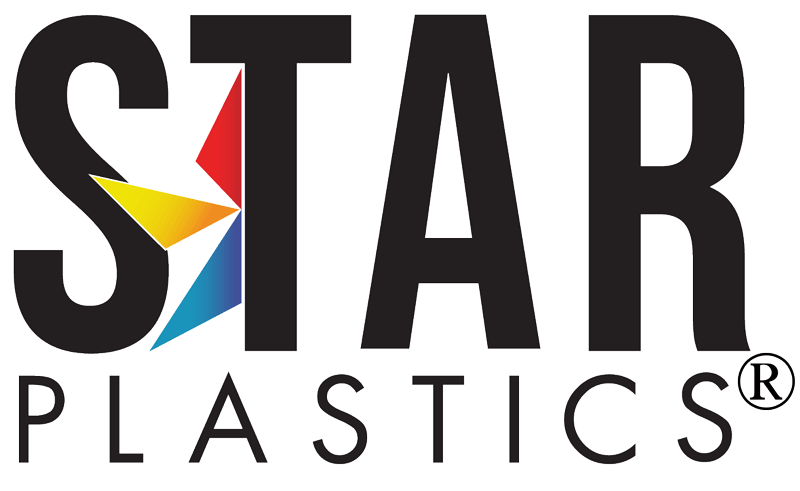July 2025 | Market Update
Engineering resin pricing, consumer confidence and Star’s ABS FR alternative – PCABSFR
July 2025 | Market Update
From Chuck Hoop, Business Director, Star Plastics
In this edition
Engineering resin pricing
Consumer confidence report
Automakers and rare-earth magnet shortage
Inflation report defined
Star’s FRABS alternative – PCABSFR
Tariffs and current status
Asia-Pacific nylon feedstock plant to close
Layoffs in the transportation sector
Pricing Update – June
Over the past 30 days, engineering resin pricing has remained generally stable. Key materials such as polycarbonate (PC), PBT, and ABS have held firm with no significant movement. However, both Nylon 6 and Nylon 66 have seen a modest decline of 2 cents per pound (CPP), reflecting slight easing in feedstock or demand pressures. Several producers have announced upcoming price increases. Lati S.p.A. released a notice regarding LATAMID, its nylon line that utilizes ATO-based flame retardant chemistries. Depending on the formulation, prices will increase between 20 and 60 CPP. This is already in effect and will impact customers using specialized FR grades.
Ineos announced a 5 CPP increase for ABS, effective July 1, 2025, citing elevated costs to manufacture and deliver products within the Americas region. Similarly, American Styrenics is implementing a 5 CPP increase for polystyrene on the same date, though no formal reasoning was provided.
Covestro announced price increases in late May for various polycarbonate-based products, attributing the change to new tariffs implemented by the current U.S. administration. These adjustments went into effect on May 15, 2025. Increases include +4 CPP for Bayblend® FR, T, M, and W grades, +10 CPP for Makroblend® materials, and +1 CPP for compounded Makrolon® grades.
Product Group Increase
Bayblend® FR grades $.04/lb.
Bayblend® T grades $.04/lb.
Bayblend® M grades $.04/lb.
Bayblend® W grades $.04/lb.
Bayblend® glass filled T grades $.06/lb.
Makroblend® grades $.10/lb.
Makrolon® compounded grades $.01/lb.
(precolored, FR, etc)
American Styrenics announced a 5 CPP increase in polystyrene for July 1 implementation. No reason was given for the increase. A copy of the letter is here.
Reuters reported near the end of June that US consumer confidence has declined due to job market worries U.S. consumer confidence declined sharply in June, falling to 93.0 from 98.4 in May, as households grew more worried about job availability and economic uncertainty linked to the Trump administration’s tariffs. The drop was broad-based—across income levels, age groups, and political affiliations, with Republicans showing the largest decline. Consumers remained hesitant about big-ticket purchases and less optimistic about income growth, although their current financial situation was still viewed as stable. A few key takeaways from the report:
- The decline in consumer confidence was unexpected.
- Inflation expectations eased to 6.0%, but more people expected interest rates to rise.
- Fed Chair Powell said more time is needed to assess tariffs’ inflationary impact before considering rate cuts.
- Good news is that house price inflation is slowing.
Overall – Consumer and labor market uncertainty is mounting amid tariff effects and geopolitical tensions. Spending may slow in the second half of 2025, with cautious consumer behavior and weakening job sentiment pointing to a potential economic softening. You can read the whole article here.
Automakers Race to Find Workaround to China’s Stranglehold on Rare-Earth Magnets
In the Wall Street Journal, major automakers are urgently seeking ways to bypass China’s export restrictions on rare-earth magnets, critical components in electric motors and other vehicle parts. These restrictions, enforced by China since April, have severely disrupted supply chains, raising the risk of factory shutdowns in the U.S. and Europe within weeks. To keep production running, some automakers are considering:
- Shifting parts of motor manufacturing to China.
- Sending U.S.-made motors to China for magnet installation (since only magnets, not finished parts, are restricted).
- Exploring alternative magnet suppliers in Europe and Asia, though current capacity can’t meet demand.
These potential workarounds, while costly and slow, are seen as necessary to avoid immediate shutdowns. This situation ironically undermines previous U.S. efforts to bring manufacturing back home. Meanwhile, industry groups have warned the Trump administration that without swift action or alternative sources, vehicle production will be significantly impacted. Read more here.
As if the automotive sector needed more issues to deal with, Ford Motor Co. and other carmakers are struggling to get these vital magnets. This is despite a recent U.S.-China agreement to ease export controls. While the situation has improved since May—when Ford halted production at a Chicago-area plant—supply remains tight, forcing the company to adjust operations to prevent further shutdowns. The shortage stems from China’s April move to require export permits for magnets, delaying shipments and straining automaker supply chains. This issue has been central to ongoing trade discussions between the U.S. and China.
From the WSJ on 6.17.25:
Q: Inflation has cooled. So why isn’t the Fed cutting rates?
A: Officials at the Federal Reserve are on track to extend their wait-and-see posture. Chief economics correspondent Nick Timiraos explained why the central bank is in a holding pattern.
“Fed officials this week will be assessing how the economy handles the initial months of historically large tariff hikes. The last three months’ inflation readings have been mild. Still, officials are worried over how tariff announcements since March could disrupt what economists refer to as “inflation expectations.”
Inflation expectations—or what consumers and businesses think inflation will be in the future—can’t be seen or touched. Researchers conduct surveys or infer them from investors’ bets on future inflation.
Expectations are both very tricky to measure and very important to the Fed. Economic theory suggests they play a crucial role in determining actual inflation. The thinking goes like this: If retailers expect their costs to be higher tomorrow, they’ll raise prices today to get ahead of it. The opposite can also be true. If households think inflation will be low and stable over time, those expectations are said to be “anchored.”
The Fed doesn’t want to make a mistake. In juggling any trade-offs, it has to wrestle with two important considerations: whether a rise in inflation expectations or a sputtering labor market is more likely, and which is more costly.
In mid-June, the WSJ reported that inflation had a lower-than-expected increase on a month-over-month basis.
Consumer prices rose 0.1% in May from the prior month and 2.4% year-over-year, meeting expectations and remaining near a four-year low. Despite earlier warnings from businesses, tariff-related inflation has not yet materialized, with prices for cars and clothing declining rather than rising. Economists suggest soft consumer demand and inventory stockpiling before tariffs may be delaying price increases. Some tariff-related items, like appliances and car parts, did see price hikes, but the overall inflation impact appears muted so far. President Trump touted the low inflation figures and called for the Federal Reserve to cut interest rates by one percentage point. The Fed is expected to hold rates steady at its next meeting, though the May report could influence future projections. If inflation stays mild and the labor market softens, rate cuts could resume later in 2025. Inflation expectations remain volatile: one survey showed consumer inflation expectations spiking to 6.6%, while another showed a dip following easing trade tensions with China. Economists caution that tariff effects may still show up later this summer, and May could be too early to draw firm conclusions. Read more here.
Star Plastics is offering an alternative to Flame Retardant ABS
In a recent article published in the Plastics News, Star Plastics is helping customers manage a severe shortage and price spike in antimony trioxide (ATO), a flame retardant primarily sourced from China. Trade tensions since early 2024 have driven ATO prices from $4–$6 per pound to $25–$30. In response, Star Plastics is offering PC/ABS flame-retardant compounds as a stable, antimony-free alternative that improves performance and helps molders avoid supply disruptions. These compounds provide better heat and impact resistance, lower shrinkage, enhanced UV and chemical resistance, and improved processability. Star specializes in engineering resins with a focus on flame-retardant grades and operates facilities in West Virginia with international partnerships.
Summary of Tariff Update: Livingston International has issued a reminder regarding significant changes to U.S. import tariffs on steel and aluminum products, effective June 4, 2025 at 12:01 a.m.
New General Tariff Rate: A 50% tariff is now applied to all steel and aluminum products and derivatives, regardless of origin. This includes shipments already in transit as of the effective date. Russia-Origin Content: Products originating in Russia or containing aluminum smelted or cast in Russia, regardless of where the final product is made, remain subject to a 200% tariff. Canada and Mexico Exceptions: If goods qualify under USMCA, they are exempt from the 25% general tariff and subject only to the 50% steel/aluminum tariff. If not USMCA-qualified but still from Canada or Mexico, only the 50% steel/aluminum tariff applies (the 25% tariff is not stacked). It is important to note that the tariffs are being applied under Section 232 of the Trade Expansion Act of 1962, allowing the U.S. President to take trade action when imports are deemed a threat to national security. These tariffs are not applied under IEEPA, and thus are not impacted by the recent U.S. Court of International Trade ruling.
Ascend Performance Materials is closing a plant making nylon feedstocks in China
Ascend Performance Materials is closing its hexamethylene diamine (HMD) plant in Lianyungang, China, less than two years after opening it. The decision follows a review of the facility’s long-term viability amid changing market and regulatory conditions. The plant supplied HMD and specialty chemicals for Ascend’s global nylon production and regional customers. The closure comes two months after Ascend filed for Chapter 11 bankruptcy protection in the U.S., citing assets and liabilities between $1 billion and $10 billion. Despite this, Ascend’s CEO said the company is making progress and expects to emerge from bankruptcy this fall. Other operations in China, including a compounding plant in Suzhou, will remain open.
Layoff wave hits freight sector as nearly 9,000 jobs slashed
Layoffs in the freight industry have intensified, with nearly 9,000 job cuts announced recently across the U.S. and Mexico. The reductions span sectors including trucking, logistics, warehousing, food supply, and manufacturing. Major U.S. companies involved include FedEx, Frito-Lay, Target, and Michaels, with states like California, Texas, and Illinois hit hardest. Notably, Lacroix Electronics is closing plants in Michigan, Texas, and Juárez, Mexico, eliminating 1,250 jobs due to declining revenue, auto sector exposure, and tariff uncertainty. In Mexico, firms like Arcomex and Schneider Electric are cutting nearly 1,000 jobs. Mexican labor leaders cite tariffs and decreased U.S. demand for vehicles and electronics as key factors, warning of further disruption to automotive supply chains. While trucks and drivers are still available, you should consider this when looking at your logistics systems and needs. Star continues to look ahead at situations like this to make sure we have assured supply to you, our valued customers.



